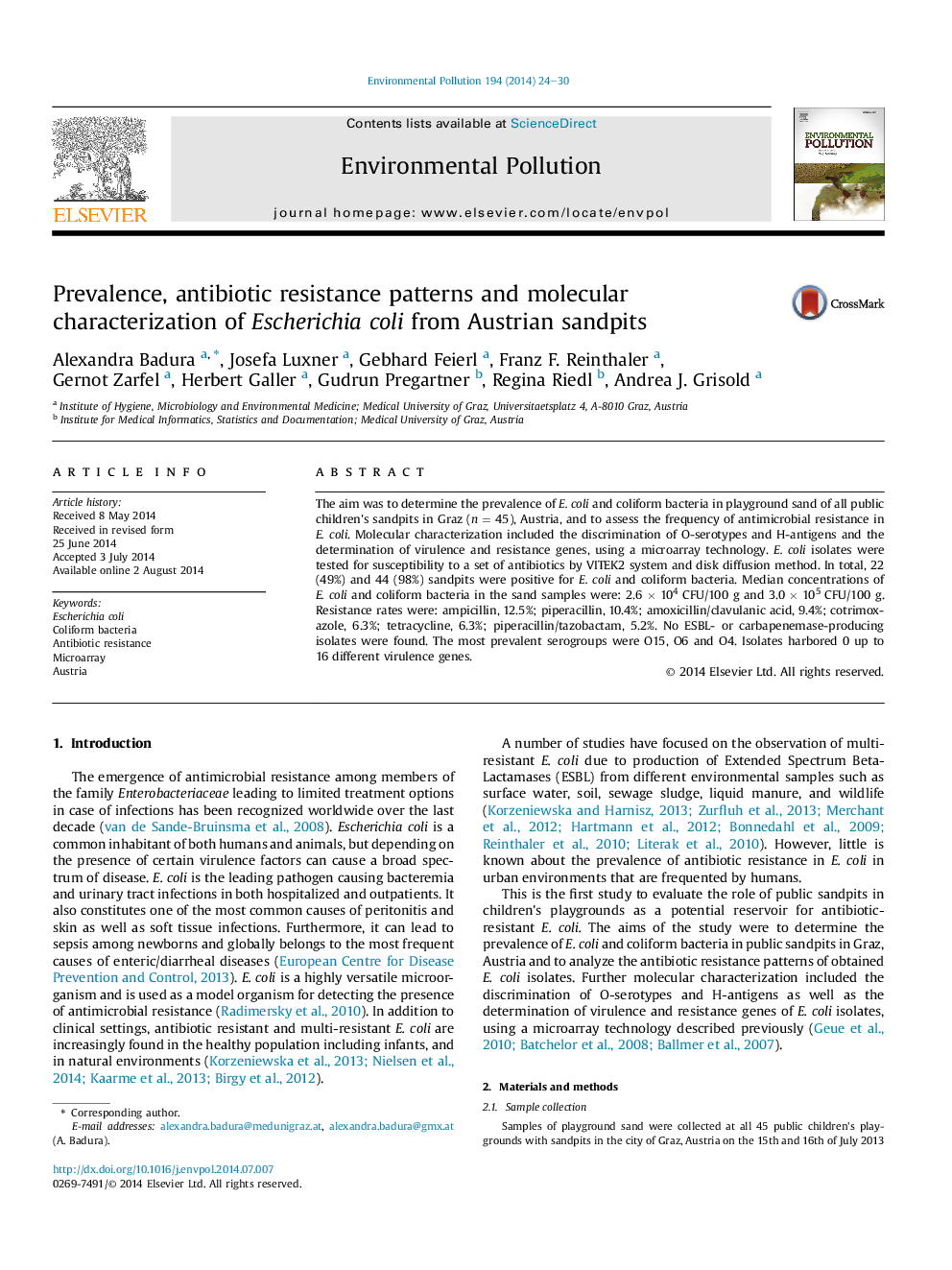| Article ID | Journal | Published Year | Pages | File Type |
|---|---|---|---|---|
| 6317794 | Environmental Pollution | 2014 | 7 Pages |
â¢E. coli is present in 49% of the public sandpits analyzed.â¢We establish a method for collecting and processing sand samples.â¢E. coli with antibiotic resistance and virulence traits occur in sandpits.
The aim was to determine the prevalence of E. coli and coliform bacteria in playground sand of all public children's sandpits in Graz (n = 45), Austria, and to assess the frequency of antimicrobial resistance in E. coli. Molecular characterization included the discrimination of O-serotypes and H-antigens and the determination of virulence and resistance genes, using a microarray technology. E. coli isolates were tested for susceptibility to a set of antibiotics by VITEK2 system and disk diffusion method. In total, 22 (49%) and 44 (98%) sandpits were positive for E. coli and coliform bacteria. Median concentrations of E. coli and coliform bacteria in the sand samples were: 2.6 Ã 104 CFU/100 g and 3.0 Ã 105 CFU/100 g. Resistance rates were: ampicillin, 12.5%; piperacillin, 10.4%; amoxicillin/clavulanic acid, 9.4%; cotrimoxazole, 6.3%; tetracycline, 6.3%; piperacillin/tazobactam, 5.2%. No ESBL- or carbapenemase-producing isolates were found. The most prevalent serogroups were O15, O6 and O4. Isolates harbored 0 up to 16 different virulence genes.
